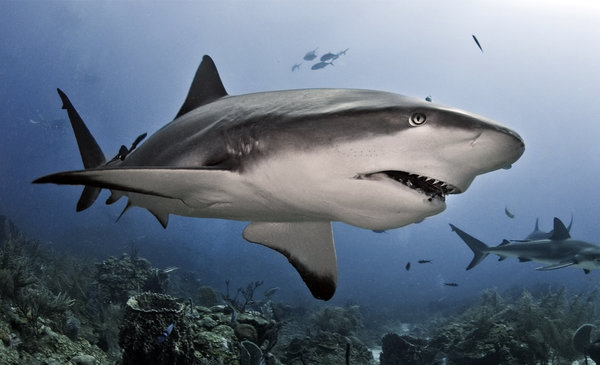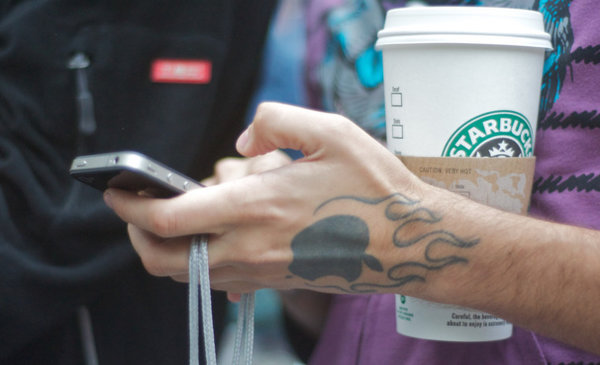
Just as doctors are said to make the worst patients, so it can also be said of most advertising agencies, PR firms, and the like.
They are called upon to diagnose and prescribe the most effective marketing treatments for their clients, but will fail to recognize those same symptoms in themselves. It is one of the greatest ironies in the communications business: the masters of communication are, very often, poor communicators about their own businesses. And to make matters worse, the business they call home is in shark-infested waters rife with competitors.
Having swum in those waters for most of my career (and I’ve got the bite marks to prove it, mind you) I attest you can place most agency communication shortcomings into three buckets: Authenticity, Differentiation and Focus. Building a professional services brand is challenging enough, to be sure. But the ad agency business is on its own level of high resistance. Here’s a brief look at some of the hardest challenges for any agency, large or small, to overcome.
1. Agency Brand Authenticity
In a business that gets paid for only telling the positive things about its client’s brand (unless compelled to do otherwise by virtue of government mandate) this seems a little counter-intuitive. However, many agencies today have an authenticity problem. Yours does too if:
- It positions your senior-level people as the new client’s “team” knowing full well they’ll likely never see them working on their business.
- Your agency has ever implied that the new client will get the same brilliant award-winning work that was done for another client, even though that same brilliant award-winning team is no longer there.
- In pitching business your agency claims other expertise they don’t have.
- Your agency intentionally proposes low fees to win business, then makes up for it in future ‘out-of-scope’ or “mission-creep” billings.
- Account planning makes recommendations weighted to those marketing channels that drive profit to the agency rather than results for clients.
- Your agency neglects to differentiate between current and former clients on your roster.
- Your agency inflates employee numbers, billings, or client growth.
- Your agency justifies any or all of these practices with “that’s just the way the game is played.”
When you select a supplier for your agency; do you not expect authenticity from them? Many agency/client relationships, through mandatory audit as a contractual condition, are compelled to be truthful or risk losing the account. But in the vast majority of other agency/client dealings, bending the truth can occur, and makes clients suspicious, strains business relationships, and weakens the partnership bond over time. And for the ad agency’s own brand, habitual obfuscation, exaggeration, or misrepresentation is more than poor business form, it’s a grave threat when exposed.
2. Agency Brand Differentiation
We’ve all been there, waiting for our turn to pitch. Across the hall, the competition waits, too. And then there’s the team after that. Everyone looks more or less the same. The scene is symbolic of the challenge, in the broader sense, for your agency’s brand to differentiate, and thereby stand out, above and beyond, the other competitors in the marketplace. Ad agencies are great at emphasizing brand differentiation to clients, though many are ineffective at differentiating themselves. They seek to stress brand differentiation by virtue of their latest campaigns, awards, client wins, etc. They speak of process and systems for this or that. And finally, they wrap it all up in a very creative package…and then they lose the pitch.
True brand differentiation takes the shape of value only your agency can own. This value is strategically defined and then validated through this filter:
- The value is extremely important to your target customer(s).
- Your agency has unique, sustainable competencies (and strategic intent) in delivering this value.
- Competing agencies are not delivering against it (nor would it be easy for them to do so in the future).
- The value you represent is unique, compelling, motivating, understandable and believable.
To be competitive, differentiation in an over-crowded industry is not optional. But it will most likely stay on our list because it’s easier to fall in line than to stand out.
3. Agency Brand Focus
Closely related to brand differentiation is brand focus; another common shortcoming for agencies. This is a niche brand strategy that many ad agencies have chosen to ignore for the sake of business expediency in the majority of cases. And once again, agencies ignore the advice they give their clients. A widespread example is when an ad agency adds other communication disciplines such as digital, public relations or package design to their menu. It is true we are in an age of “integrated communications,” and ad agencies are in a unique position to be the client’s “general contractor,” orchestrating and taking the lead for the team of marketing specialists on the account, without becoming a jack-of-all-trades themselves.
Lack of focus and specialization, whether by discipline, category or industry, dilutes the strength of the agency brand by diminishing its assumed leadership expertise. For ad agencies, shrinking media revenues and tighter commissions, among other factors, brought much of this about. With the “Mad Men” days (as well as those full commissions) long gone, agencies sought to diversify and to even distance themselves from the label “agency.” Nevertheless, “one stop shopping” may yield customer convenience, but not the expertise of a specialist – a requirement of client brands today.
Looking Beyond A Surface Remedy
Agency brand issues of authenticity, differentiation and focus can’t be addressed with a new logo or a website refresh. These are issues that are at the core of the agency’s integrity, its ability to secure new business, attract and retain talented creatives and to build its reputation. In short, it’s all about the brand. How often has it been said that “the cobbler’s children have no shoes,” yet there are many ad agencies that are struggling or failing to reach their full potential for that very reason. Authenticity, differentiation and focus are the starting point for a serious workshop about Brand Insistence for your agency. Email The Blake Project to find out more about how we help agencies differentiate.
Digging Deeper
See the following articles for additional insights on this topic.
The Blake Project can help you differentiate your agency brand. Email us to find out more.
Branding Strategy Insider is a service of The Blake Project: A strategic brand consultancy specializing in Brand Research, Brand Strategy, Brand Licensing and Brand Education
FREE Publications And Resources For Marketers















